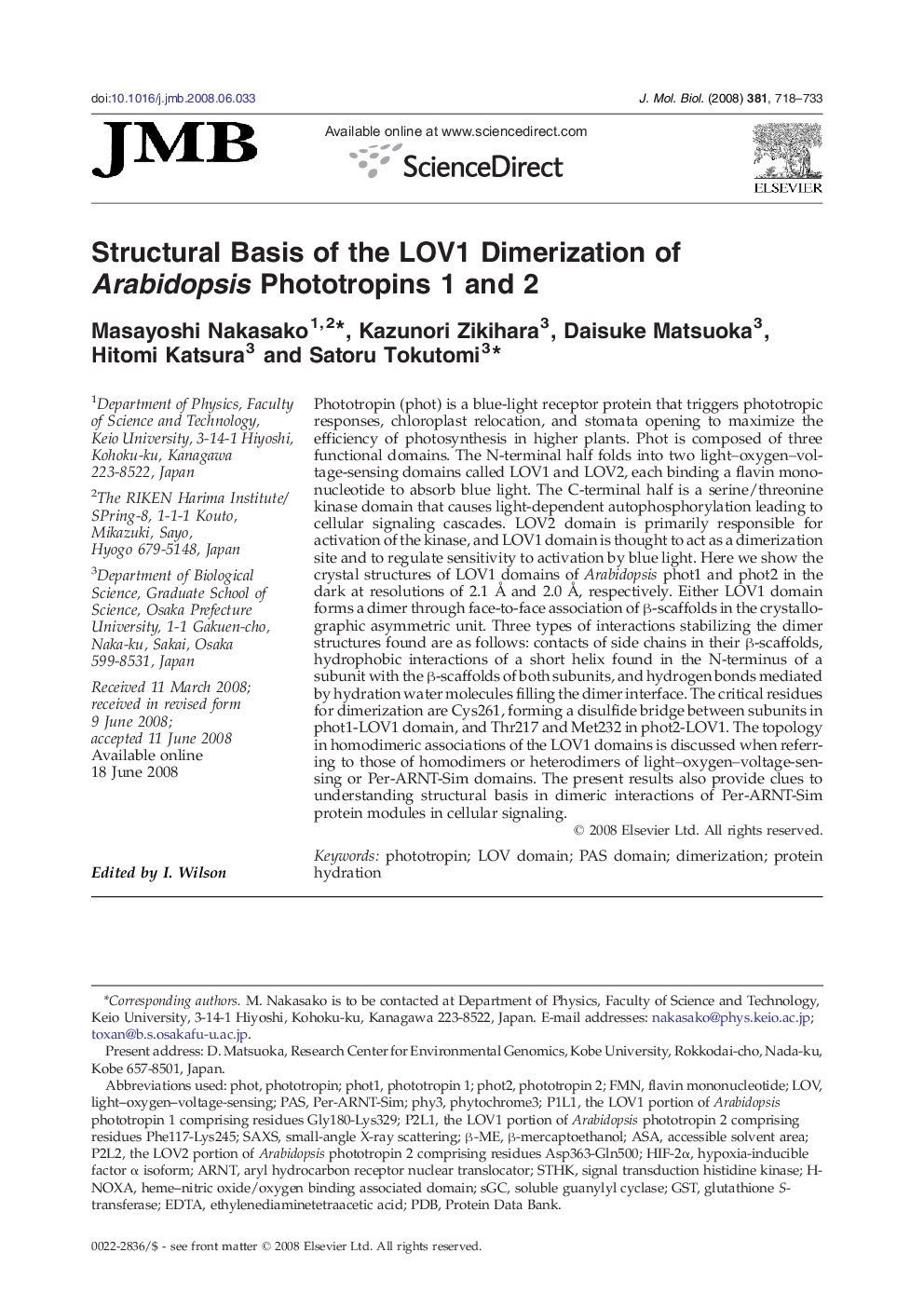| Article ID | Journal | Published Year | Pages | File Type |
|---|---|---|---|---|
| 2187330 | Journal of Molecular Biology | 2008 | 16 Pages |
Phototropin (phot) is a blue-light receptor protein that triggers phototropic responses, chloroplast relocation, and stomata opening to maximize the efficiency of photosynthesis in higher plants. Phot is composed of three functional domains. The N-terminal half folds into two light–oxygen–voltage-sensing domains called LOV1 and LOV2, each binding a flavin mononucleotide to absorb blue light. The C-terminal half is a serine/threonine kinase domain that causes light-dependent autophosphorylation leading to cellular signaling cascades. LOV2 domain is primarily responsible for activation of the kinase, and LOV1 domain is thought to act as a dimerization site and to regulate sensitivity to activation by blue light. Here we show the crystal structures of LOV1 domains of Arabidopsis phot1 and phot2 in the dark at resolutions of 2.1 Å and 2.0 Å, respectively. Either LOV1 domain forms a dimer through face-to-face association of β-scaffolds in the crystallographic asymmetric unit. Three types of interactions stabilizing the dimer structures found are as follows: contacts of side chains in their β-scaffolds, hydrophobic interactions of a short helix found in the N-terminus of a subunit with the β-scaffolds of both subunits, and hydrogen bonds mediated by hydration water molecules filling the dimer interface. The critical residues for dimerization are Cys261, forming a disulfide bridge between subunits in phot1-LOV1 domain, and Thr217 and Met232 in phot2-LOV1. The topology in homodimeric associations of the LOV1 domains is discussed when referring to those of homodimers or heterodimers of light–oxygen–voltage-sensing or Per-ARNT-Sim domains. The present results also provide clues to understanding structural basis in dimeric interactions of Per-ARNT-Sim protein modules in cellular signaling.
